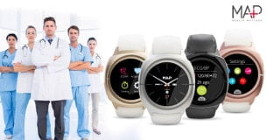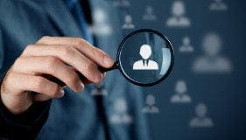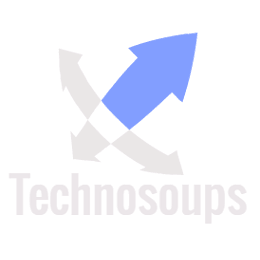MAP Health Watch
By measuring a total of 6 vital signs around the clock with medical grade sensors, the MAP Health Watch provides richer patient data than doctors have ever had access to before.

By measuring a total of 6 vital signs around the clock with medical-grade sensors, the MAP Health Watch provides richer patient data than doctors have ever had access to before. MAP Health Watcher’s proprietary analytical algorithms filter out noise from the measured signal and continuously compare the real-time data against known patterns and your own unique health profile. In this way, the system can instantly flag up anything unusual that may indicate the first sign of trouble.
Simply wearing the MAP Health Watch allows us to collect and process medical data in real time and respond immediately in the event of any issue of concern. If our algorithm recognizes any known pattern of a developing disease, we notify you and our medical team provides instant and tailored advice.
MAP Health Watch




Background system
Distributed storage | Stream processing | Distributed cache
During the data processing many user’s data are collected at the same time, so a distributed system has been developed that is able to receive, process and analyze the data. During the development we used stream-based signal processing. An essential element of the system is that it can be scaled to meet the proper needs. A distributed cache system was introduced to store short-term memory and we used a distributed database to store long-term data.
Signal processing
noise filtering | filtering incorrect data | retrieving data
Noise filtering/filtering incorrect data/retrieving data Signal Processing is the initial task of analyzing the data, during which two main tasks are to be performed:
- Analyzing the raw data with filtering the noises and the incorrect data.
- Metadata (features) must be created from the signals that are essential for the analysis and increase accuracy.
System based on artificial intelligence
neural network | decision trees | clustering
With the help of the smartwatch’s measurements, we have day-to- day data that characterize our body's behavior. The interpretation of the data is assisted by the tools of artificial intelligence, so the operation of the human body can be modeled, we can explore relationships and make predictions. The changes can be described by mathematical forms too. For effective application, a cloud-based solution is required where computing capacity can be formed to meet the needs.
Rule-based system
expert system | knowledge based system | expert model
Medical knowledge is a rule-based technique that can be described by expert systems and can be used to model knowledge accumulated by doctors over many years. Such systems also allow that the conclusion drawn from data analyzed by the computer to appear in a representative manner to doctors. Case-based analysis is done. Integrating medical experience into the system can result an immediate alarm.












